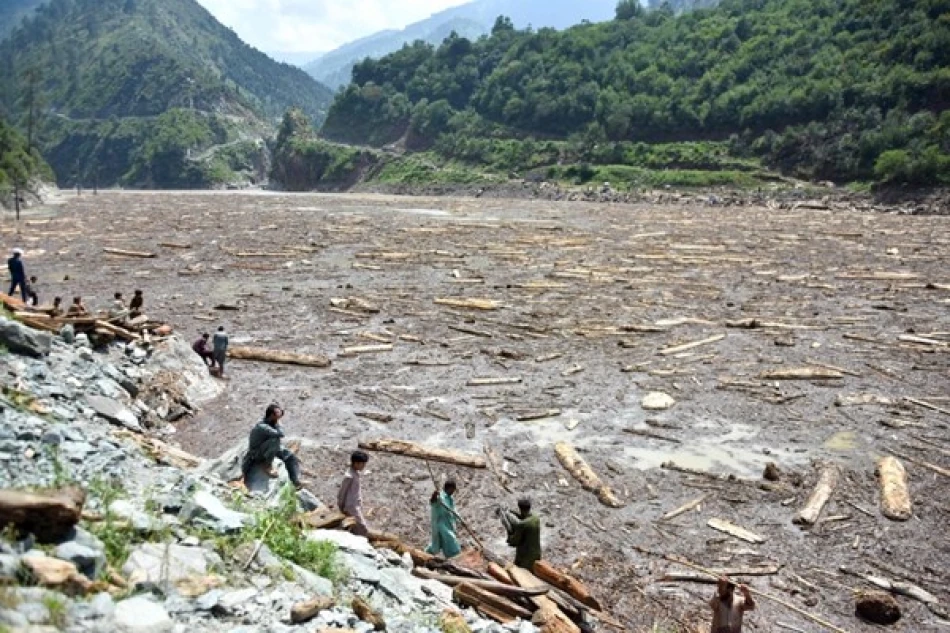
Devastating Floods in Pakistan Leave 150 Missing: A Harrowing Crisis Unfolding
Pakistan Flash Floods Claim 344 Lives as Climate Crisis Deepens South Asian Monsoon Devastation
Catastrophic flash floods have killed at least 344 people across Pakistan, with 150 more missing in the northwestern province of Khyber Pakhtunkhwa alone. The disaster underscores Pakistan's mounting vulnerability to extreme weather events, positioning the country at the epicenter of a climate crisis that threatens to reshape South Asia's economic and social landscape.
Search and Rescue Operations Face Mounting Challenges
Thousands of Pakistani rescue workers battled knee-deep mud and continuing rainfall on Sunday to reach homes buried under massive boulders, desperately searching for survivors. Asfandyar Khattak, head of the Provincial Disaster Management Authority in Khyber Pakhtunkhwa, confirmed that approximately 150 people remain missing in the Buner district, likely trapped beneath collapsed homes or swept away by floodwaters.
Additional dozens are reported missing in the Shangla district, highlighting the widespread nature of this disaster across Pakistan's mountainous northwest region.
Climate Vulnerability Exposes Pakistan's Infrastructure Crisis
The current floods represent more than a natural disaster—they reveal Pakistan's systemic inability to cope with increasingly severe weather patterns. The country experienced devastating floods in 2022 that affected 33 million people and caused $30 billion in damages, yet little progress has been made in flood-resistant infrastructure development.
Most casualties occurred in Khyber Pakhtunkhwa province, where meteorologists predict intensifying monsoon rains in the coming days. This forecast suggests the death toll could rise significantly, particularly given the region's vulnerability to landslides that can bury entire communities.
Economic Implications Beyond Immediate Relief
Pakistan's recurring flood disasters create a vicious economic cycle. Each major flood event—now occurring with increasing frequency—diverts government resources from development projects to emergency response and reconstruction. This pattern undermines Pakistan's ability to build climate resilience, leaving the country perpetually vulnerable to the next disaster.
The timing is particularly challenging given Pakistan's ongoing economic crisis and negotiations with international lenders. Emergency spending on flood response could complicate fiscal targets agreed upon with the International Monetary Fund.
Regional Context: South Asia's Climate Frontline
Pakistan's flood crisis reflects broader climate pressures across South Asia. Unlike wealthier nations that can invest heavily in flood defenses—such as the Netherlands' sophisticated water management systems or Japan's advanced early warning networks—Pakistan lacks the financial resources and technical infrastructure for comprehensive flood protection.
The contrast with neighboring countries is stark. While India has made significant investments in meteorological forecasting and disaster preparedness, Pakistan's capacity remains limited. Bangladesh, despite being equally flood-prone, has developed more effective community-based early warning systems that have reduced casualty rates in recent years.
Long-term Implications for Regional Stability
These recurring disasters pose implications beyond Pakistan's borders. Climate-induced displacement could trigger regional migration pressures, while Pakistan's weakened state capacity affects regional security dynamics. The international community's response to Pakistan's climate vulnerability will likely influence broader discussions about climate finance and adaptation funding for developing nations.
The current floods demonstrate that without substantial international support for climate adaptation infrastructure, Pakistan will continue experiencing catastrophic losses from increasingly severe weather events—a pattern that threatens both regional stability and global climate commitments.
Most Viewed News

 Layla Al Mansoori
Layla Al Mansoori






